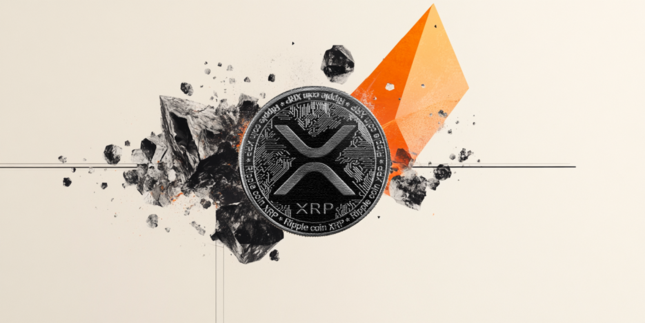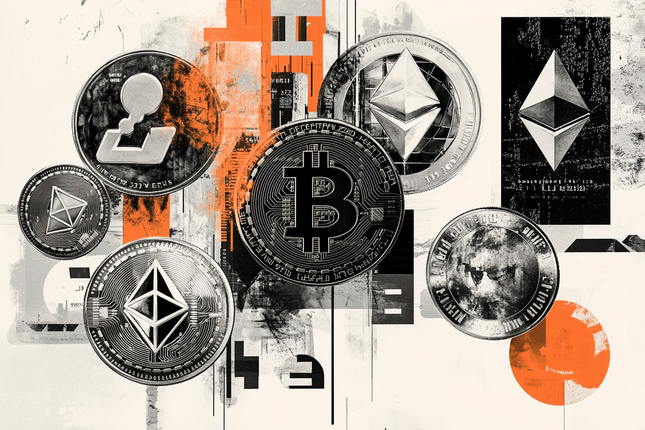RIPPLE NEWS, ANALYSIS AND FORECAST
Latest Ripple News
Ripple Technical overview
Latest Ripple Analysis
Editors' picks

XRP steadies above $1.90 support as fund inflows and retail demand rise
Ripple (XRP) is stable above support at $1.90 at the time of writing on Monday, after several attempts to break above the $2.00 hurdle failed to materialize last week. Meanwhile, institutional interest in the cross-border remittance token has remained steady.

Cardano struggles to extend gains as retail interest wanes despite Midnight's NIGHT token launch
Cardano ticks higher after a bearish weekend, struggling to extend an upcycle within a descending wedge pattern. On-chain data shows an increase in trading volume and user activity after the Midnight side chain token launch.

Crypto Today: Bitcoin, Ethereum recover as XRP remains supported by ETF inflows
Bitcoin is trending up toward the pivotal $90,000 level at the time of writing on Monday, which marks four consecutive days of gains. Altcoins, including Ethereum and Ripple, are also rebounding above key short-term support levels.

Bitcoin nears $90,000 as recovery hopes clash with institutional outflows
Bitcoin is approaching the $90,000 resistance level at the time of writing on Monday, raising hopes of a short-term recovery. However, the bullish recovery is being challenged by weakening institutional demand, as evidenced by outflows from Spot ETFs.

Crypto Today: Bitcoin, Ethereum, XRP tilt toward breakout on risk-on sentiment
Bitcoin (BTC) kicked off October on a strong note, with the price breaking above $116,000 on Wednesday. Despite a market-wide expectation that September is usually a bearish month for cryptocurrencies, BTC posted gains of 5.31%.
BTC
ETH
XRP
What is Ripple?
Ripple is a blockchain-based digital payment company founded in 2012 that utilizes the cryptocurrency, XRP, to facilitate fast and low-cost international fiat currency transactions. XRP is the native cryptocurrency of the XRP Ledger, the blockchain that powers Ripple's operations. It's important to note that XRP is a cryptocurrency while Ripple is the parent company behind its operations.
XRP was created with almost the same goal as Bitcoin, which is to facilitate easier payments globally but with a focus on businesses and banking institutions. Unlike Bitcoin – which is mined over time – all XRP tokens were issued at its launch. At the time of writing, over 59 billion XRP tokens are in circulation, with a total supply of 100 billion XRP.
While XRP was originally designed to facilitate B2B international transactions, its price volatility has seen traders leverage it for speculative purposes.
A major turning point in XRP's history is the beginning of Ripple's legal battle with the US Securities & Exchange Commission (SEC). The SEC filed a lawsuit against Ripple and its co-founders Christian Larsen and Bradley Garlinghouse in late 2020, alleging that the sale of XRP was an unregistered security offering. In July 2023, a federal court ruled that XRP is not a security when sold to retail investors, marking a major victory for Ripple.
Furthermore, Ripple created a stablecoin, RLUSD, to improve cross-border payments for its users. RLUSD is designed to maintain a 1:1 price peg with the US Dollar. With this stablecoin, Ripple aims to tackle concerns about XRP's volatility by providing a stable option for users to conduct transactions.
Differences between Ripple, Bitcoin and Ethereum
XRP's main difference from Bitcoin and Ethereum stems from its user focus, consensus process and market dynamics. While all three cryptocurrencies have a lot of similarities in basic features like privacy and transparency, they differ in other key areas.
Satoshi Nakamoto created Bitcoin as a decentralized medium of exchange and store of value for everyday users. Ethereum is designed to power smart contracts that enable the creation of decentralized applications (dApps) that cut across finance (DeFi), supply chain, asset management, gaming (GameFi), governance (DAOs), etc.
XRP, on the other hand, is tailored to serve as a cross-border payment solution for businesses and financial institutions but could also facilitate peer-to-peer transactions.
Another key difference is the process through which Bitcoin and XRP validate transactions. While Bitcoin leverages the energy-intensive Proof-of-Work (PoW) consensus mechanism and Ethereum uses Proof-of-Stake (PoS) to validate transactions, XRP functions via a social governance consensus process that requires network nodes to maintain a trusted list of validators that reaches consensus on the correct state of the ledger/blockchain.
Unlike Bitcoin and Ethereum, validators don't receive rewards in newly minted coins as all XRP tokens were pre-mined during the creation of the cryptocurrency.
XRP's consensus process made it more scalable and cheaper in processing transactions than Bitcoin and Ethereum. XRP can theoretically process 1,000 transactions per second (TPS), with each transaction costing only 0.00001 XRP. Bitcoin and Ethereum can only process roughly 7 and 20-30 TPS, respectively, with transaction fees occasionally crossing $100 during heightened network activity.
Other areas of difference include:
- The XRP Ledger and Ethereum's ability to host tokenized funds like stablecoins and utility tokens while Bitcoin can't.
- XRP's huge supply of 100 billion XRP against Ethereum's average supply of 120 million – maintained by a burn mechanism – and Bitcoin's deflationary design of a 21 million BTC supply cap and a halving mechanism to reduce its emission rate.
- XRP has strong ties to the company Ripple, as demonstrated by its significant underperformance after the SEC sued the latter. Bitcoin and Ethereum, on the other hand, have no strong ties to a single company.